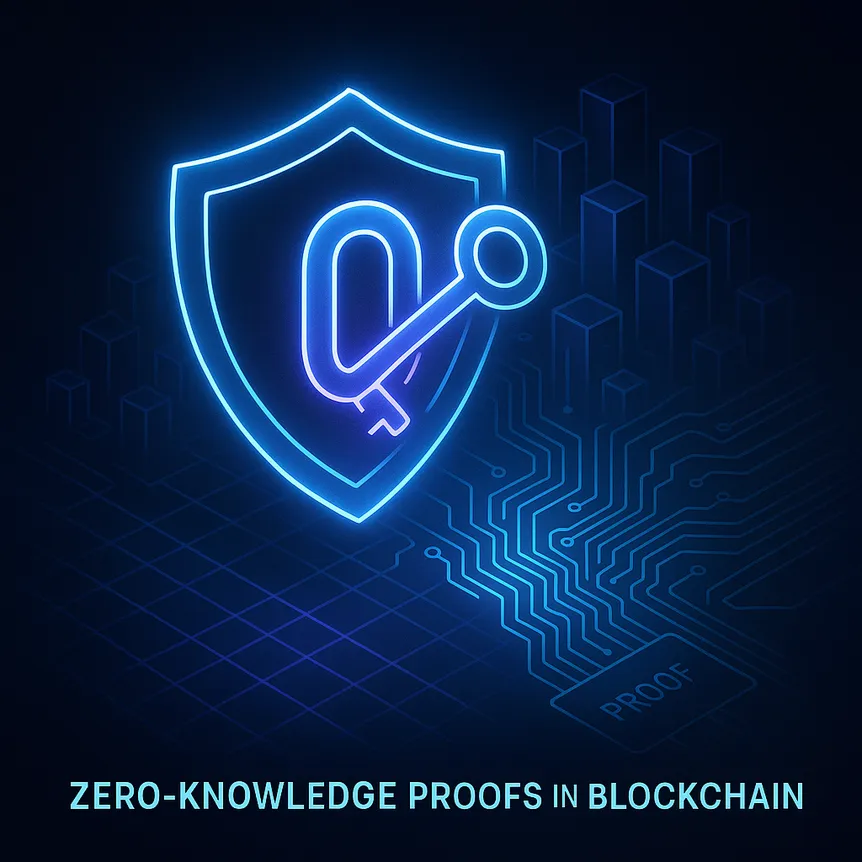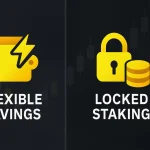If there’s one phrase reshaping the crypto conversation, it’s this one: Zero-Knowledge Proofs in Blockchain. The hype is deserved, but it’s not just hype—ZK tech is quietly reinventing privacy, scalability, and compliance for Web3. In plain terms, zero-knowledge lets you prove something is true without revealing the underlying data. That single idea unlocks private payments, KYC without leaks, faster and cheaper transactions, and even on-chain machine learning—all while staying verifiable.
This guide walks you through what ZK is, why it matters now, how it works under the hood, and where to use it—whether you’re a developer, a founder, or a trader scouting the next wave of crypto infrastructure.
Quick heads-up for traders: if you want exposure to the zk ecosystem, you can explore listings and promotions on MEXC. Use referral code mexc-CRYPTONEWER when you sign up to support this work.
What zero-knowledge means in human language
Imagine showing a bouncer you’re over 18 without handing over your ID. Or proving you have enough funds to buy something without revealing your entire bank statement. That’s the essence of zero-knowledge proofs (ZKPs): a way for a prover to convince a verifier a statement is true, with no extra data leaked.
- Completeness: true statements convince honest verifiers.
- Soundness: false statements can’t fool verifiers (except with negligible probability).
- Zero-knowledge: nothing beyond truth is revealed.
In blockchains, ZKPs can compress complex computations into tiny proofs that are cheap to verify on-chain. That’s why they’re a double win: privacy and scalability.
The families of ZK you’ll actually encounter
- Interactive vs. non-interactive: blockchains use non-interactive proofs (a single message) so nodes can verify deterministically.
- zk-SNARKs: succinct, fast to verify, often require a trusted setup; battle-tested in systems like Zcash and many rollups using PLONK or Groth16 variants.
- zk-STARKs: transparent (no trusted setup), post-quantum assumptions, typically larger proofs but improving fast; popularized by StarkWare.
- Bulletproofs: no trusted setup, compact for range proofs; great for confidential transactions but slower verification at scale.
You’ll frequently see “PLONKish” proving systems, Halo2 recursion, and polynomial commitment schemes (KZG, IPA) in modern designs. The high-level trade-off is usually: setup trust vs. proof size vs. prover speed vs. verifier cost.
Why Zero-Knowledge Proofs in Blockchain matter now
- Privacy that plays nice with regulation: prove KYC, age, residency, or AML screening without doxing users.
- Scalability that keeps decentralization: ZK rollups execute off-chain then post succinct proofs on-chain, achieving high throughput with L1-grade security.
- Composability without exposure: private state and selective disclosure enable new DeFi and identity primitives.
- Programmable verifiability: attest computations, models, or game logic happened correctly, even if run off-chain.
Core building blocks, minus the jargon
- Circuits and constraints: your program is transformed into a circuit of constraints (R1CS or PLONKish). The proof shows all constraints are satisfied.
- Prover and verifier: the prover does heavy computation off-chain; the verifier checks a tiny proof on-chain with minimal gas.
- Trusted setup vs. transparent: SNARKs often need a one-time ceremony to create parameters. STARKs don’t but may produce larger proofs.
- Recursion: proofs that verify other proofs let you batch thousands of transactions or cross-chain attestations into a single succinct proof.
- Data availability (DA): rollups must make transaction data accessible so anyone can reconstruct state. DA strategies influence security and fees.
Where ZK is already useful
- Private payments: shield amounts and addresses while proving balances and validity. See Zcash and Aztec.
- Layer 2 scaling with ZK rollups: systems like StarkNet, zkSync, and Polygon zkEVM execute off-chain, prove on-chain.
- Identity and compliance: verifiable credentials (VCs) let you prove “I’m KYC’d” without revealing your name or passport number.
- On-chain games and simulations: keep private state or randomness hidden while proving fairness.
- Verifiable off-chain compute: “ZK coprocessors” attest heavy workloads (matching engines, analytics, ML inference) with minimal on-chain cost.
- Lightweight blockchains: Mina Protocol uses recursive proofs to keep chain size tiny.
How ZK rollups cut costs and add speed
- Execution happens off-chain; the sequencer orders transactions.
- A prover generates a validity proof for a batch.
- The L1 contract verifies the proof and updates state roots.
- Fees drop because the chain verifies one succinct proof instead of thousands of transactions.
Two major flavors exist:
– Validity rollups with call data on L1: strongest security, higher DA costs.
– Validium/hybrid: store data off-chain or in specialized DA layers; cheaper, different trust assumptions.
Developer’s quick-start path
1) Pick a stack
– Circom + snarkJS: accessible for constraint writing, huge community.
– Noir (Aztec): ergonomic language designed for ZK circuits.
– Halo2 (zkSync, privacy projects): powerful for custom circuits and recursion.
– Cairo (StarkNet): STARK-focused language with growing tools.
– Plonky2 (Polygon): fast recursive SNARKs, good for rollup builders.
2) Model your statement
– Keep it narrow. Prove exactly what you need (e.g., range proof, set membership, balance proof).
– Use Pedersen or Poseidon hash-friendly primitives where appropriate.
3) Optimize early
– Minimize constraints; micro-optimizations compound.
– Favor lookup arguments (PLONKish) when patterns repeat.
– Benchmark prover time and memory; consider GPU/ASIC acceleration for production.
4) Think about verification costs
– On-chain verification must be affordable across market conditions.
– Cache verifying keys, and watch precompile availability for KZG or pairing ops.
5) Treat security like production engineering
– Avoid bespoke cryptography unless you have experts. Lean on audited libraries.
– Plan for parameter upgrades, ceremony hygiene, and key rotation.
– Run adversarial testing and circuit fuzzing with malicious inputs.
Identity, privacy, and compliance that actually work together
- Verifiable Credentials (VCs): issuers (exchanges, banks) sign claims like “age > 18.” Holders present ZKPs to verifiers without revealing PII.
- Selective disclosure: share only what’s needed—age threshold, jurisdiction, creditworthiness proof—no raw document handover.
- Travel Rule and AML: prove counterparties are screened without exposing full customer databases.
- Enterprise and DeFi: permissioned pools where access is gated by ZK proofs, preserving privacy while meeting rules.
What to watch if you’re trading the ZK narrative
ZK tokens don’t move in isolation. Narratives cluster around ecosystems, mainnets, and technical milestones:
– Mainnet upgrades and proving breakthroughs: faster provers or cheaper verification can shift economics.
– DA partnerships and sequencer decentralization: impacts trust profile and fee outlook.
– Developer traction: SDK maturity, grants, audits, and real apps.
– Interoperability and recursion: cross-chain proof systems and aggregated rollups.
Looking to participate in the zk ecosystem? You can explore listings on MEXC sign-up and use referral code mexc-CRYPTONEWER when you register. Always DYOR—ZK is powerful tech, but markets are volatile.
Practical trade-offs and risks
- Prover cost: generating proofs can be hardware-intensive. Watch for GPU/FPGA/ASIC acceleration and outsourcing models.
- Trusted setup hygiene: multi-party ceremonies reduce risk; transparent systems avoid it but may pay in proof size.
- Quantum assumptions: STARKs rely on hash-based security; SNARKs with pairings may need post-quantum upgrades long term.
- UX friction: wallet integrations for proofs, private note management, and recovery flows need polish.
- Data availability: cheaper DA can add trust assumptions; pick according to your risk tolerance.
Benchmarks to evaluate projects
- Verification cost on L1: how many gas units per proof? Are precompiles used?
- Prover TPS and latency: can it handle bursts? What’s the batch size?
- Circuit complexity and audits: has anyone outside the team reviewed it?
- Recursion and batching: does it aggregate proofs to reduce fees further?
- DA strategy: on-chain call data, committees, or modular DA like EigenDA or Celestia?
- Decentralization path: sequencer roadmap, permissionless proving, open-source status.
A tiny mental model for ZK economics
- Throughput scales by batching more work per proof.
- Fees drop as verification remains constant while batch size grows.
- Marginal costs migrate to the prover and DA, making hardware and data strategies key profit centers.
A short tour of noteworthy ecosystems
- Ethereum L2 ZK rollups: StarkNet, zkSync Era, Polygon zkEVM, Scroll, Linea—each with different proving systems and trade-offs.
- Privacy layers: Aztec focuses on private programmable money; RAILGUN and others bring private DeFi.
- Lightweight chains: Mina uses recursive SNARKs to keep nodes ultra-light.
- Tooling: Circom, Noir, Halo2, Cairo, Plonky2, gnark—each with varied learning curves and performance.
If you’re exploring exposure to these ecosystems as an investor, keep an eye on credible listings and liquidity on exchanges such as MEXC. Use code mexc-CRYPTONEWER if you decide to create an account.
Developer FAQ
-
Are zk-SNARKs better than zk-STARKs?
It depends. SNARKs often give smaller proofs and very fast verification but may require a trusted setup. STARKs are transparent and have strong theoretical guarantees, with improving performance profiles. Many stacks blend ideas from both. -
Do zero-knowledge proofs hide everything?
They hide what you choose to hide. Good designs practice selective disclosure, exposing state roots or public inputs while proving private parts. -
How do ZK rollups differ from optimistic rollups?
Optimistic rollups assume validity unless challenged within a window. ZK rollups prove validity upfront with a succinct proof. The result is faster finality and different fee dynamics, though DA costs matter in both. -
Can regulators audit ZK systems?
Yes. With VCs and selective disclosure, auditors can request targeted proofs. ZK is compatible with compliance when designed thoughtfully. -
What’s recursion and why is it hyped?
Recursion allows verifying many proofs inside one outer proof. It reduces on-chain cost and enables scalable cross-chain attestations and aggregated rollups.
Builder checklist you can copy
- Define the exact statement you want to prove.
- Choose a well-supported proving system and language.
- Optimize constraints early and measure prover time.
- Decide on DA strategy and verification gas budget.
- Plan for upgrades, audits, and parameter ceremonies.
- Prototype with public testnets; gather performance metrics.
- Document threat models and user privacy assumptions.
Learning resources to go deeper
- Ethereum’s overview on rollups
- Zcash’s accessible intro to zk-SNARKs
- StarkWare research and docs at starkware.co
- ZK-focused community events like ZKSummit
Next steps
- If you’re a developer, pick one stack (Circom or Noir are great starters) and implement a small proof like a range check.
- If you’re a founder, map compliance needs to ZK-enabled identity flows with VCs and selective disclosure.
- If you’re a trader, track mainnet upgrades and DA partnerships across rollups; liquidity and fee curves change quickly.
- If you want a home base for zk listings, check MEXC sign-up and use referral code mexc-CRYPTONEWER.
Not financial or legal advice. ZK is powerful, but the details matter—designs, audits, and DA choices define the real security envelope.





